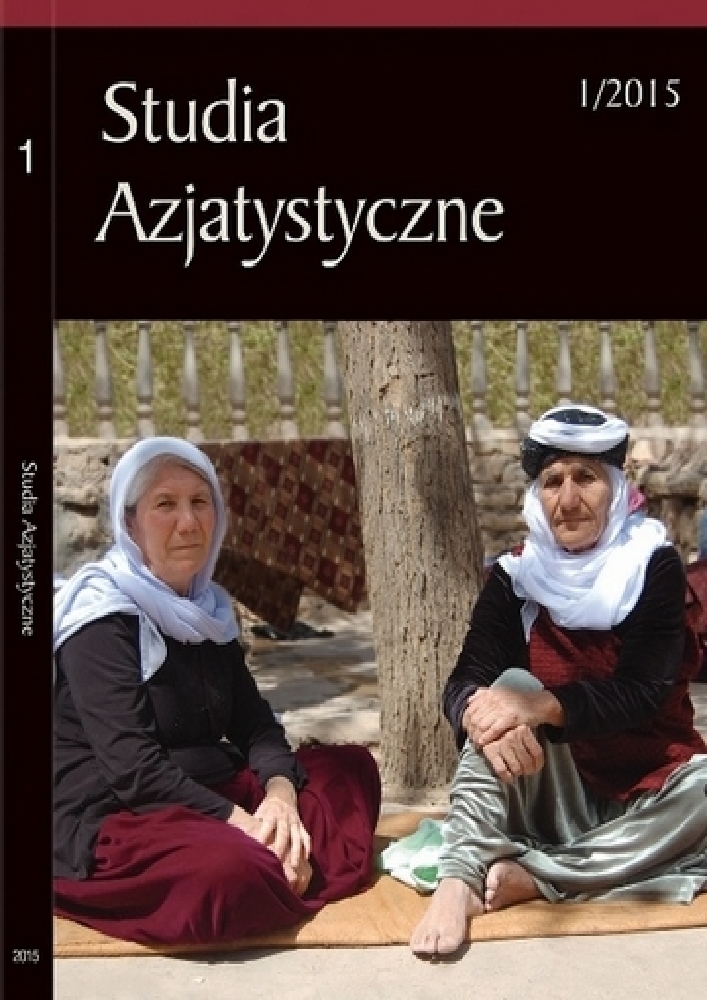Abstrakt
According to ancient Japanese beliefs invisible ghosts could freely travel between the worlds of supernatural and human. However, the travel was not limited to the souls of dead. It was believed that a soul could leave the body of a living person, do mischief and return. Such occurrence was called ikiryō. This paper analyses examples of such phenomenon depicted in two literary sources: Lady Rokujō from Murasaki Shikibu’s (978? 1016?) Genji monogatari (1008) and an unnamed noblewoman from Konjaku monogatarishū (1120).In both instances emotions play great role in creating ikiryō. Women’s souls separate from the body and serve punishment for sufferings caused by unfaithful men. However, there is a distinct difference in the matter of one’s awareness in becoming ikiryō. Lady Rokujō is unaware of her soul’s travels and experiences them as traumatic episodes of psychosis. On the other hand the unnamed noblewoman willingly turns her soul into ikiryō to deliver vengeance on her ex-lover and regains peace afterwards.
Ikiryō is a manifestation of one’s true emotions. It shows not only the complexity of Japanese concept of a soul but also touches on the issue of women social status during Heian period.
Bibliografia
Bargen, Doris G. 1997. A Woman’s Weapon Spirit Possesion in the Tale of Genji. Honolulu: University of Hawaii Press.
Doerner, D. L. 1977. Comparative Analysis of Life after Death in Folk Shintō and Christianity, Japanese Journal of Religious Studies Vol. 4, No. 2/3 (Jun.-Sep.), 151-182.
Ebersole, Gary L. 1992. Ritual Poetry and the Politics of Death in Early Japan. Princeton: Princeton University Press.
Hori, Ichirō. 1983. Folk Religion in Japan. Continuity and Change. Chicago: University of Chicago Press.
Japanese Classics Translation Commitee. 1969. The Manyōshū [Dziesięć tysięcy liści]. New York: Columbia University Press.
Kanert, Maciej. 2005. Buddyzm japoński. Jego polityczne i społeczne implikacje w okresie 538-645. Warszawa: Wydawnictwo TRIO.
Katō, Totsudō. 2006. Shiseikan [Pogląd na życie i śmierć]. Tōkyō: Shoshishinsui.
Katsuda, Itaru. 2003. Shishatachi no chūsei [Średniowiecze zmarłych]. Tōkyō: Yoshikawakōbunkan.
Katsuda, Itaru. 2006. Nihon chūsei no haka to sōsō [Pogrzeby i groby w średniowiecznej Japonii]. Tōkyō: Yoshikawakōbunkan.
Komatsu, Kazuhiko (red.). 2003. Nihon yōkaigaku taizen [Japońskie postaci nadprzyrodzone – dzieła zebrane]. Tōkyō: Shōgakukan.
Kordzińska-Nawrocka, Iwona. 2005. Japońska miłość dworska. Warszawa: Wydawnictwo TRIO.
Kotański, Wiesław. 1986. Kojiki, czyli księga dawnych wydarzeń. Warszawa: Państwowy Instytut Wydawniczy.
Kotański, Wiesław. 1996. Dziedzictwo japońskich bogów. Wrocław: Ossolineum.
Kubiak Ho-Chi, Beata. 2009. Estetyka i sztuka japońska. Wybrane zagadnienia. Kraków: Universitas.
Mabuchi, Kazuo (red.). 2002. Konjaku monogatarishū [Zbiór opowieści o dawnych wydarzeniach]. Tōkyō: Shōgakkan.
Melton, Gordon J. (red.). 2001. Encyclopedia of Occultism & Parapsychology. Vol. 1. New York: Gale Group.
Naumann, Nelly. 2004. Death and Afterlife in Early Japan: Susanne Formanek (red.). Practicing the Afterlife: Perspectives from Japan. Wien: Verlag der Österreichischen Akademie der Wissenschaft, 51-63.
Niwa, Motoji. 1992. Ohaka no hanashi [O grobach]. Tōkyō: Kawade Shodoshinsha.
Rygał, Magdalena. 2008. Oblicza mono no ke w Genji monogatari: Iwona Kordzińska-Nawrocka (red.). W kręgu tradycji dworu Heian. Warszawa: Wydawnictwo TRIO, 237-260.Sakamoto, Tarō (red.). 1998. Nihonshoki [Kroniki japonskie]. Tōkyō: Iwanamishoten.
Shikibu, Murasaki. 1998. Genji monogatari [Opowieść o księciu Genjim]. Tōkyō: Iwanamishoten.
Shinbo, Satoru. 2009. Nihonjin no shiseikan. Nihonbunka no konpon o motomete [Poglądy na życie i śmierć Japończyków. W poszukiwaniu źródeł japońskiej kultury]. Okayama: Daigakukyōikushuppan.
Scheid, Bernhard. 2004. Overcoming Taboos on Death: the Limited Possibilities of Discourse on the Afterlife in Shintō: Susanne Formanek (red.). Practicing the Afterlife: Perspectives from Japan. Wien: Verlag der Österreichischen Akademie der Wissenschaften, 205-231.
Takagi, Kiyoko. 1983. Bungaku ni mirareru sei to shi [Życie i śmierć w literaturze]. Tōkyō: Taimeidō.
Tamura, Yoshirō (red.). 1983. Nihon ni okeru sei to shi no shisō [Ideologia życia i śmierci w Japonii]. Tōkyō: Yūhikaku.
Taniguchi, Moto. 2009. Kaidan itan [Dziwne opowieści]. Kyōtō: Suisei-sha.
Tubielewicz, Jolanta. 2011. Superstitions, Magic and Mantic Practices in the Heian Period – Part One: Alfred F. Majewicz (red.). Analecta Nipponica 1/2. Warszawa: Polish Association for Japanese Studies, 139-202.
Yamaori, Tetsuo. 1993. Bukkyō minzokugaku [Buddyzm w folklorystyce]. Kōdansha: Tōkyō.
Yokoyama, Yasuko. 1997. Edo Tōkyō no kaidan bunka no seiritsu to hensen [Powstanie kultury kaidan w Edo Tokio i jej zmiany]. Tōkyō: Kazamashobō.
Licencja

Ten utwór jest dostępny na licencji Creative Commons Uznanie autorstwa 4.0 Międzynarodowe.
